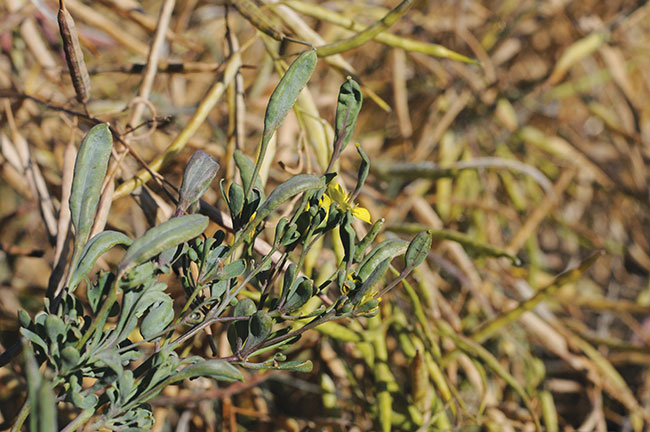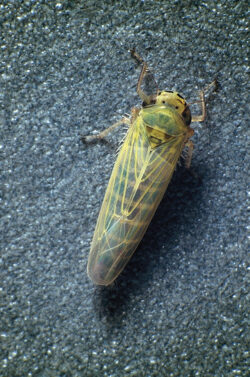
Features
Diseases
Aster yellows rapid test moving forward
Rapid identification could inform management decisions.
April 18, 2023 By Bruce Barker
 Aster yellows is an infrequent disease of canola on the Prairies.
ALL Photos courtesy Chrystel Olivier.
Aster yellows is an infrequent disease of canola on the Prairies.
ALL Photos courtesy Chrystel Olivier. “I’m crushing your head!” Not only is crushing an insect pest satisfying for some, but it is also the basis for a new rapid test that can be done in the field from the back of the pickup truck. This new test, developed by Agriculture and Agri-Food Canada (AAFC) scientists, makes it easier and cheaper to detect aster yellows disease in canola.
“Our tool will help save precious time and resources for scientists, agronomists and producers,” says Karolina Pusz-Bochenska, who worked on the test as part of her PhD at the University of Saskatchewan under the supervision of AAFC scientists Tim Dumonceaux and Tyler Wist.
Aster yellows disease is an infrequent disease in canola, although it can be present at low levels every year on the Prairies. It is caused by a phytoplasma organism. This organism is a bacterial pathogen with unusual growth requirements necessitating the invasion of an insect or plant host cell to survive and reproduce. On the Prairies, the most common insect host is the aster leafhopper, also known as the six-spotted leafhopper (Macrosteles quadrilineatus). The majority of aster leafhoppers found on the Prairies travel on wind from the southern and central United States – explaining the sporadic nature of the disease.
The most obvious symptom of aster yellows in canola is malformed flowers that turn the pods into leafy, bladder-like structures.
The most recent aster yellow outbreak was in 2012. That year, aster yellows symptoms on canola were observed on average on 10 per cent of plants (with a range of three to 80 per cent) while PCR (polymerase chain reaction) analysis found an average aster yellows incidence close to 25 per cent (range 12 to 90 per cent) in Saskatchewan canola fields.
Prior to the development of the rapid test, a laboratory PCR analysis was required to detect aster yellows phytoplasma DNA. It was costly and time consuming. The new test takes less than an hour, and can be conducted roadside.
“It’s actually very simple. Farmers could even do the testing in the back of their trucks,” says Pusz-Bochenska. “All you have to do is to crush a leafhopper on a special piece of paper and expose it to a certain temperature.”

The aster leaf hopper, Macrosteles quadrilineatus, can carry the phytoplasma organism that causes aster yellows.
After 20 minutes, a fabric puncher takes a piece of the crushed insect to obtain a DNA sample. This sample is then analyzed with a LAMP assay (loop-mediated isothermal amplification). If there is a colour reaction changing from pink to orange, it indicates the presence of aster yellow phytoplasma.
The research results were published in Plant Health Progress journal in 2020. The LAMP assay was found to more accurately detect aster yellows phytoplasma, and is more sensitive than the usual standard test for DNA lab analysis.
Three companies have signed a licensing agreement with AAFC to commercialize the test. They are Pest Surveillance Initiative Ltd at Winnipeg, Man., Harvest Genomics Inc. at Guelph, Ont., and Laboratoire D’expertise Et De Diagnostic En Phytoprotection in Quebec City. The test could potentially be delivered to producers in a kit format in the future.
Wist is working on an economic threshold for infected aster leafhopper in canola, but has been frustrated by the lack of infected leaf hoppers arriving on the Prairies, and a method to reproduce infected leaf hoppers artificially. If he is successful, the threshold combined with the rapid test could be a valuable tool to help minimize the impact of aster yellows in Prairie crops.
“Farmers will be able to mitigate the potential damage to their crop yields through early detection of infected leafhoppers,” says Pusz-Bochenska. “Our tool will help them understand whether they should spray pesticides right away to kill these infected leafhopper insects.